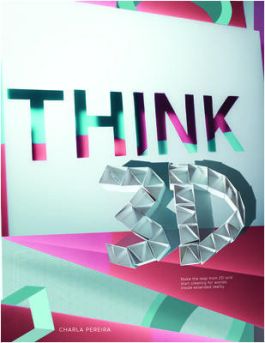Think 3D
Receive via shipping:
Colour, print bound version of the complete text
* INTRODUCTION
* HOW THIS BOOK WORKS
1 DEFINING THE Rs (XR, AR, MR, VR)
2 WHY 3D
3 PERSPECTIVE
4 PRINCIPLES
* WHAT I LEARNED FROM GAME DESIGNERS
5 KNOW THE USER
6 FRAMING
7 STORIES
* SAFETY AND COMFORT
* HISTORICAL TIMELINE OF XR
8 PROTOTYPING
9 THE DEMO
10 FINAL THOUGHTS
* GLOSSARY
* CITATIONS + REFERENCES
Think 3D is a workbook geared toward the growing Extended Reality (XR) community in Canadian higher education: universities, colleges, vocational studies, maker spaces, centers of excellence, and programs looking to start teaching how to create for spatial computing such as Virtual Reality, Augmented Reality, and Mixed Reality. Think 3D is rich in stories, experiences, information, illustrations, and exercises targeted at this fast-growing field.
The online gaming industry forecasts that revenue in this space will reach up to $12.2 billion by 2023. Demands for XR are on the rise, and it’s challenging for companies to find people trained to do the work. This workbook helps bridge that gap. Students gain practical, hands-on experience by completing a guided 3D design project that runs throughout each chapter. Every chapter spotlights industry leader advice from the field's most influential XR designers, including Jaron Lanier (Microsoft), Claudia Krebs (The HIVE), and Kathleen Mulcahy (Microsoft).
The power to connect with the 3D world involves thinking in 3D and harnessing the emerging technologies and devices that build and embody our ideas. Thinking in 3D is a leap we all need to take to envision, create, and develop in this new world.
Engaging Writing Style. The writing style is clear, concise, and student-friendly while maintaining the technical rigour necessary for XR subject matter.
Learning Outcomes and Goals. At the beginning of every chapter, students are presented with a list of clear learning outcomes and goals, chunking topics together and making it easy for students to follow.
Relatable and Relevant Content. Pereira provides context to each chapter’s topic with relatable and relevant personal stories, real-world examples, and industry leader advice.
Rules to Design by Boxes. These boxes provide students with a suggested set of rules they should follow and apply to the concept they’re learning to help strengthen their design building skills and challenge their work.
Self-Assessment. At the end of every chapter, students are asked to complete a self-assessment test that helps measure their comprehension of that chapter’s core concepts.
Running 3D Design Project. Throughout this workbook, students will work on a guided 3D design project that’s integrated throughout each chapter. As each chapter builds on top of the other, the student will understand the entire 3D design process from start to finish.
Worksheets and Grids. Designed to help students sketch out their ideas in 3D. Includes thought starters, questions, exercises, and tips.
Learning Pedagogy. Pereira includes a Notes section, Key Terms, Glossary, and Additional Resources to support student learning.
About the Workbook. Each chapter is divided into sections that include both learning and doing. First, you will explore the core concepts which are necessary for working in 3D. Then you will test your comprehension through exercises and assessments. The workbook sections are about your project - the 3D experience that you will design while working through this book. Each chapter adds a new level of understanding and an additional step in creating your XR project. This framework will support your 3D thinking in the future.

